Kleiner’s Korner: The Danger of Fire Along the Motor Parkway
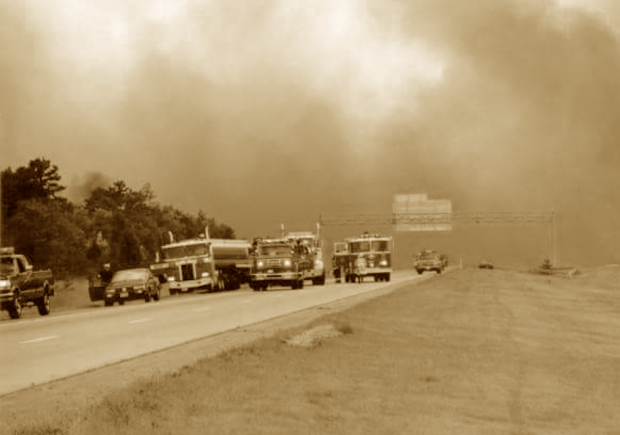
Fires were reported on or near the Motor Parkway beginning from its earliest days to long after its closing.
The areas surrounding the Motor Parkway were prime targets of forest fires. Often the blame was placed on those building the parkway or those traveling on it.
Cover photo courtesy of Scott Eckers.
Art Kleiner
1908: Hempstead
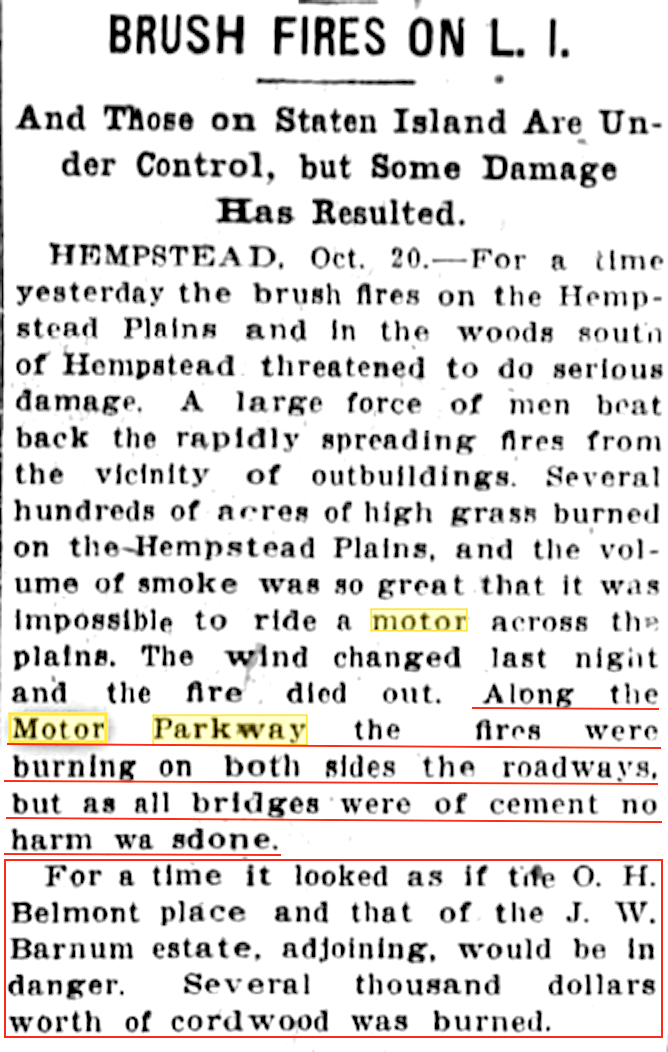
Soon after the Parkway opened in October of 1908 a fire ignited on the Hempstead Plains of which the Parkway passed through. Both sides of the Parkway were aflame but no harm was done to the Parkway bridges. (Brooklyn Times Union Oct. 20, 1908)
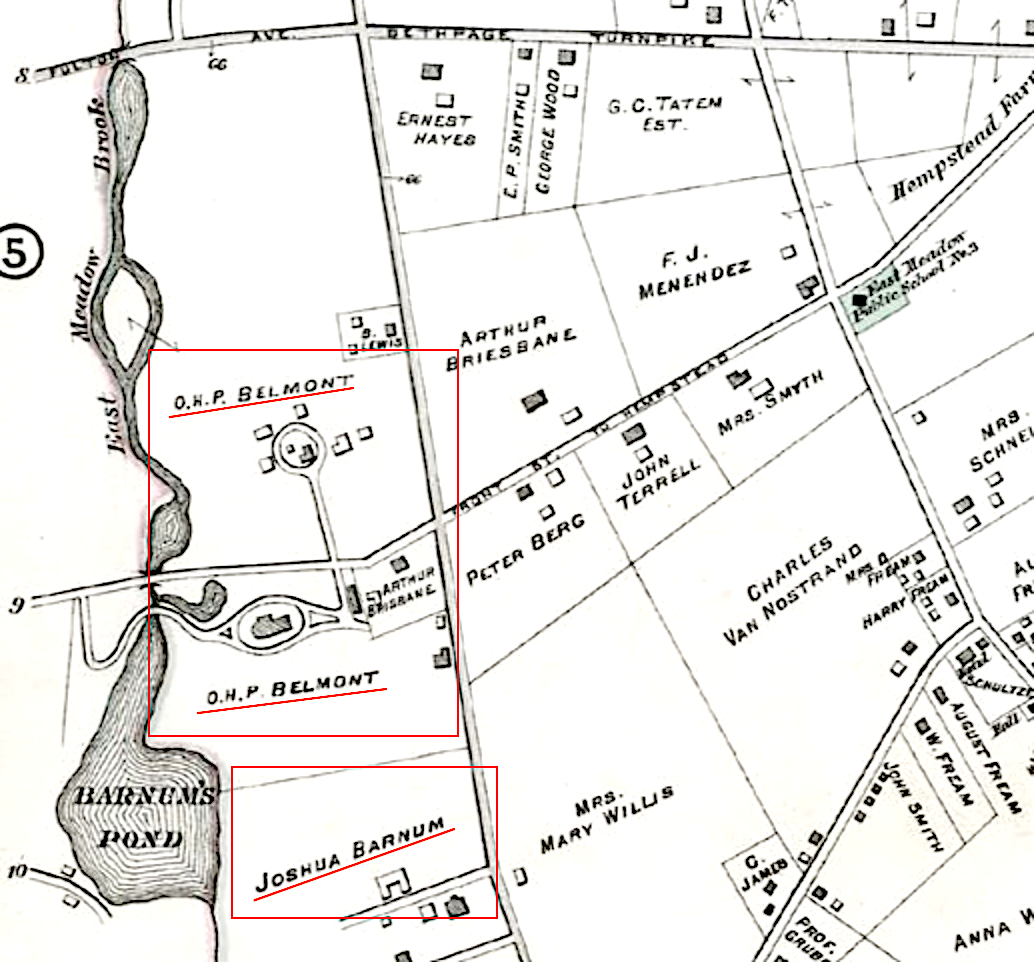
Several estates were thought to have been in danger, including that of O.H.P. Belmont, (Brooklholt), Willie K's. step-father.
(Belcher-Hyde, 1906)
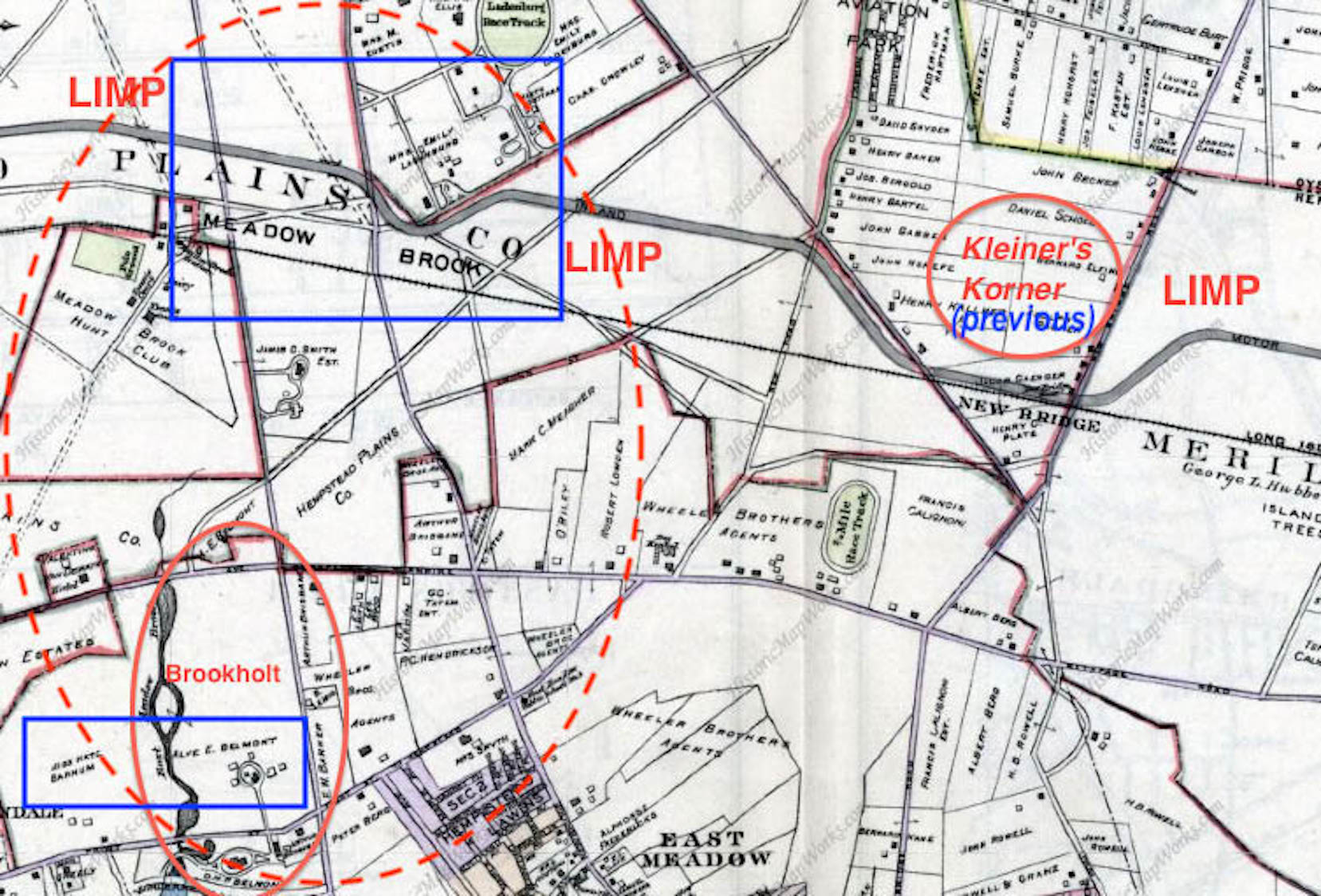
This 1914 map shows the extent of the fire if unchecked including the Motor Parkway bridges and the estates in danger.
1912: Melville
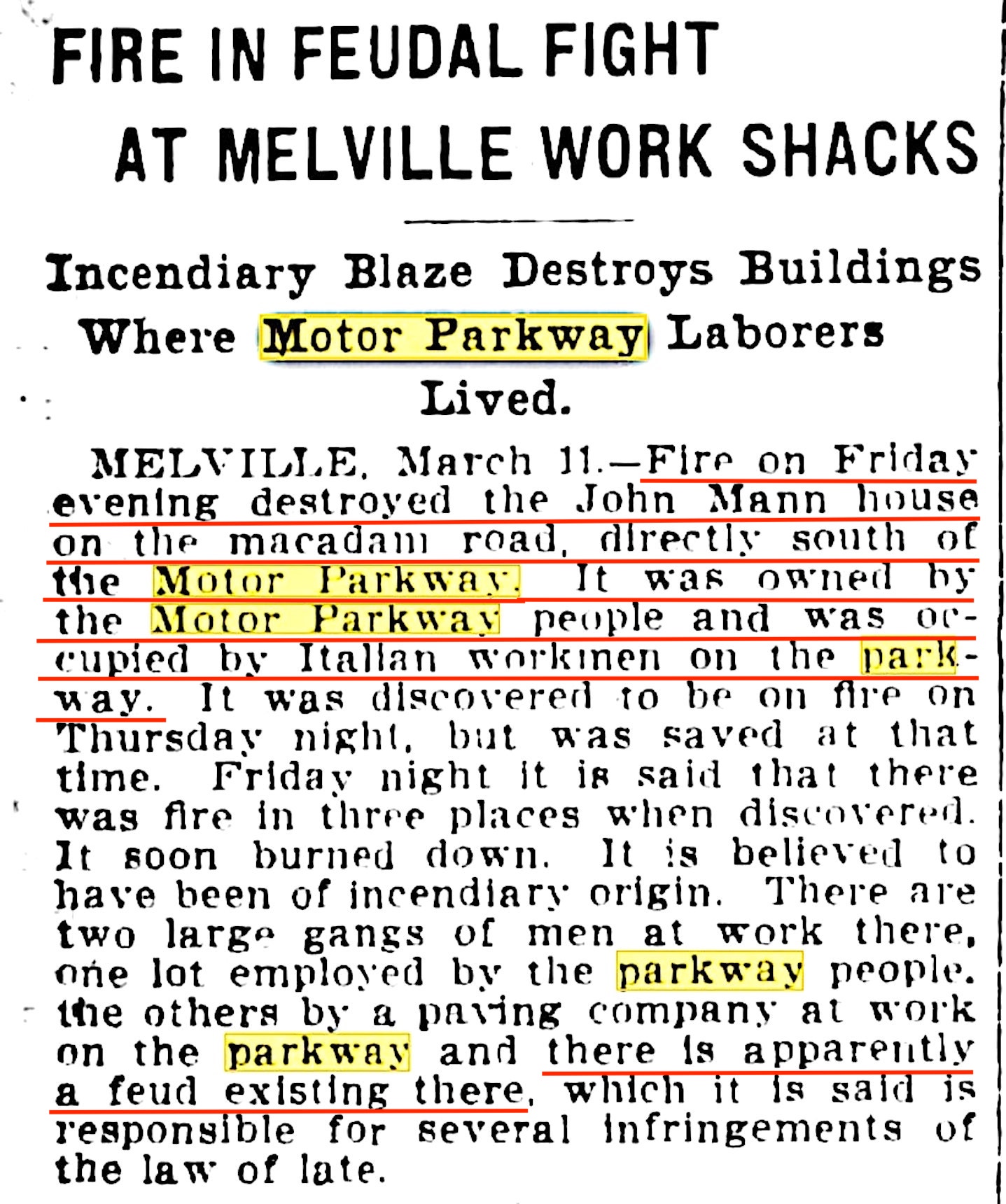
In 1912 a building owned by the Motor Parkway and housing two groups of workers in Melville caught fire and burned down. Was bad blood between these two groups the cause? (Brooklyn Times Union Mar. 11. 1912)
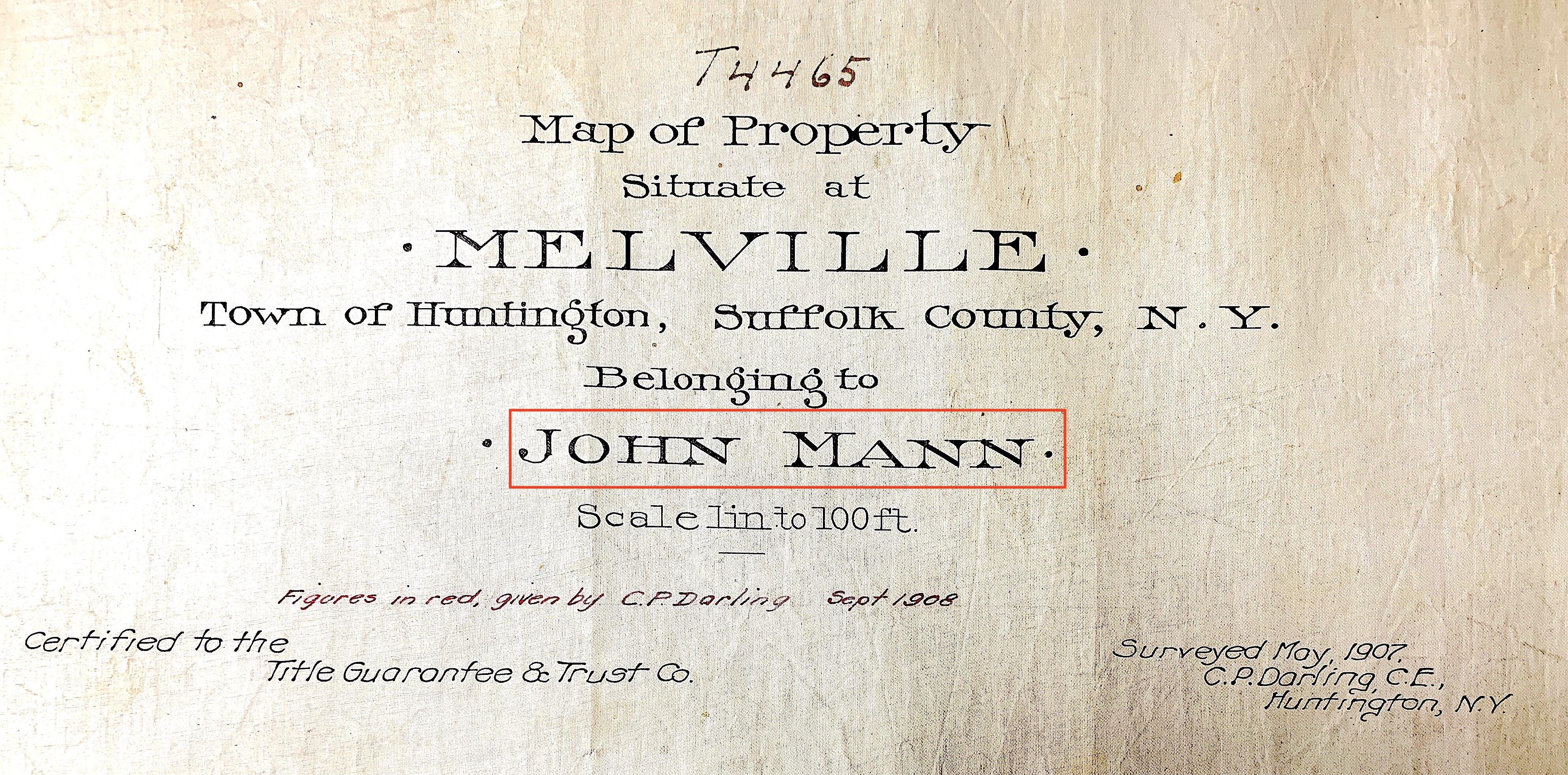
The land on which the building was located was owned by John Mann and was adjacent to the Parkway.
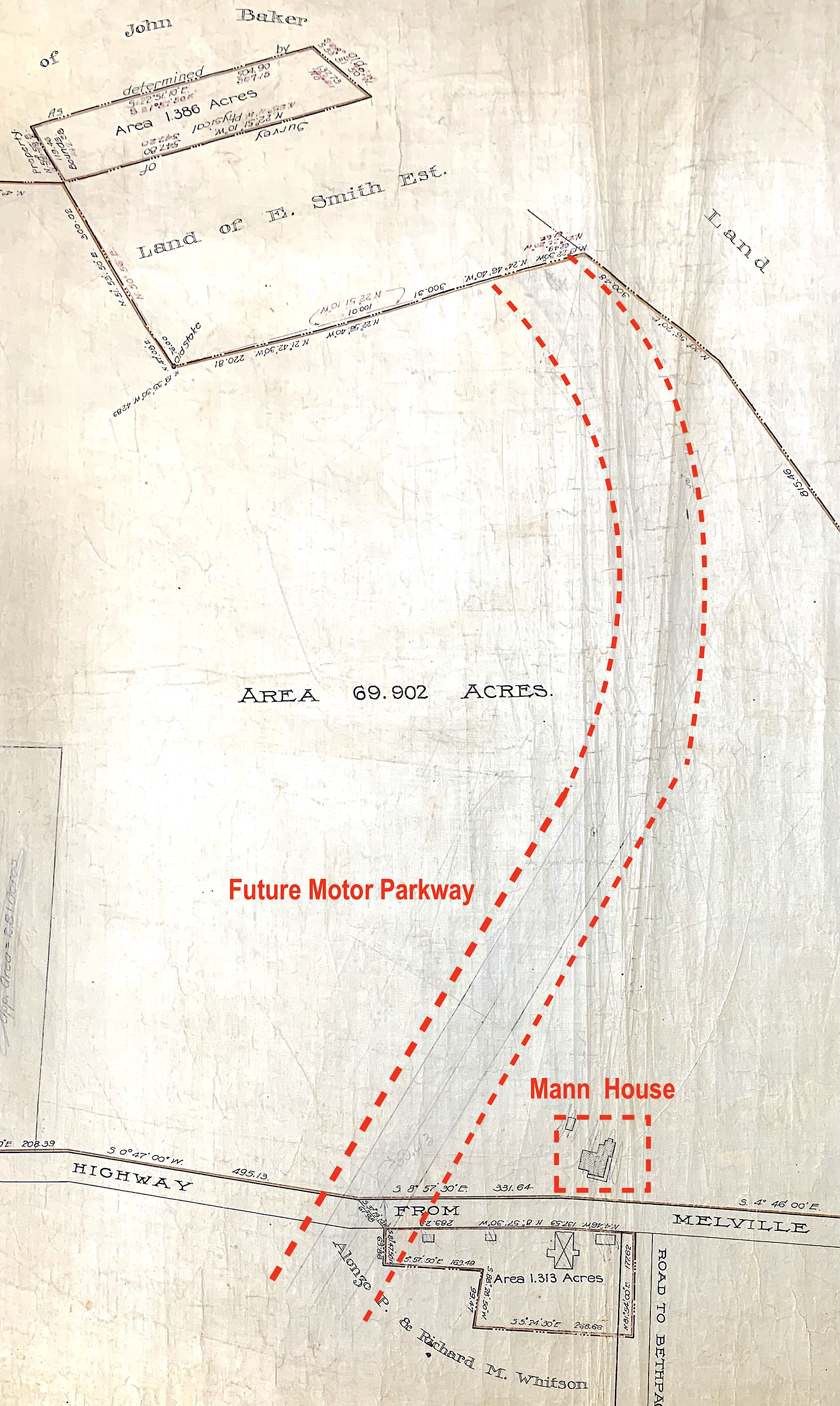
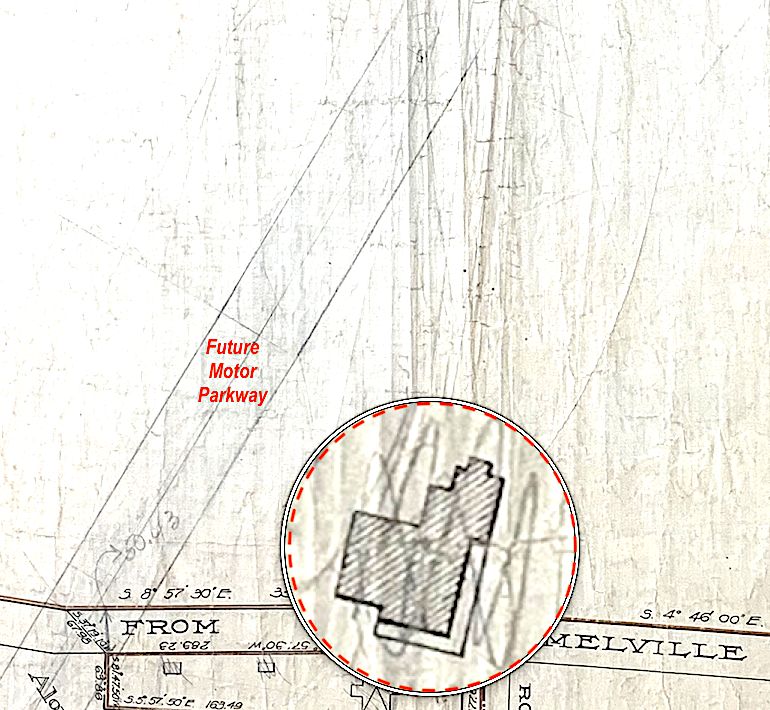
John Mann's building.
1914: Hauppauge
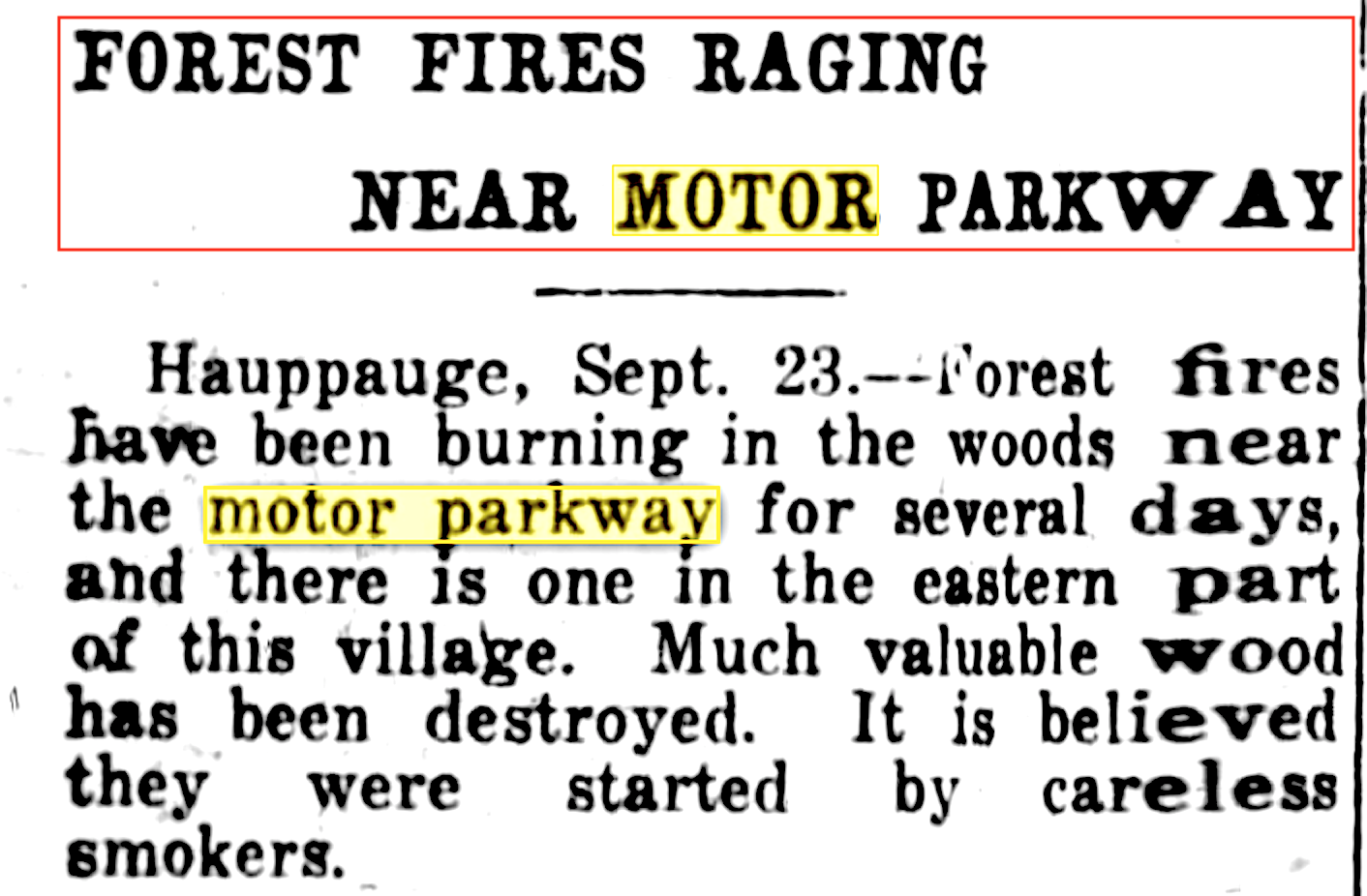
This 1914 fire in Hauppague was thought to haven been started by "careless smokers". (Brooklyn Times Union Sept. 23, 1914)
1922: Commack
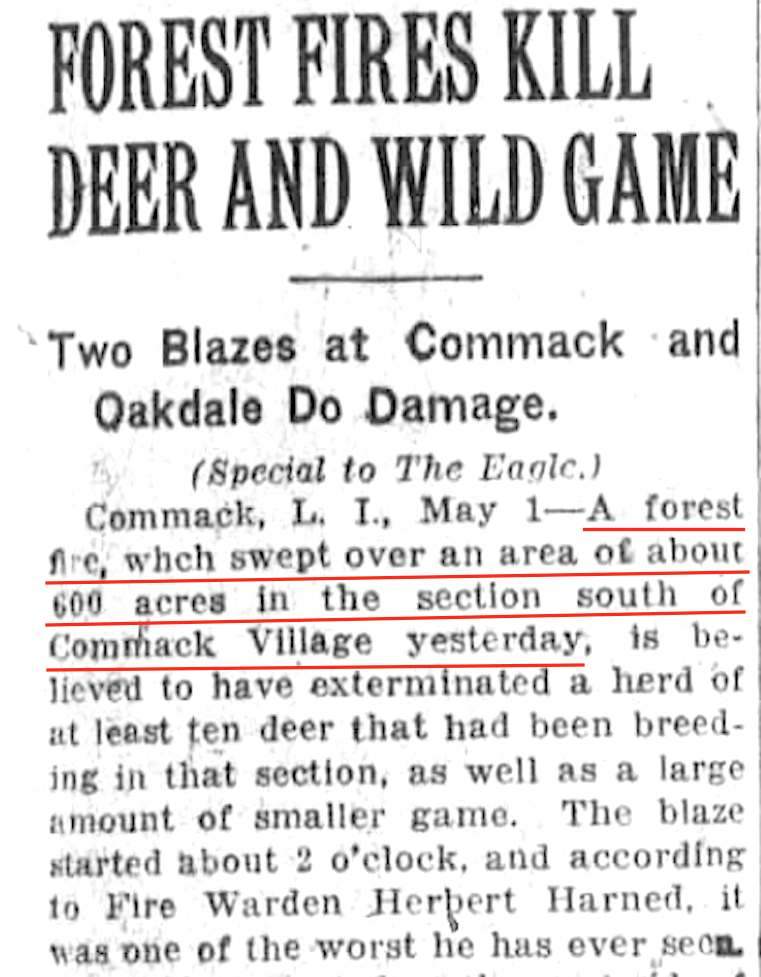
Encompassing about 600 acres this 1922 fire in Commack was also blamed on motorists who were careless in extinguishing fires they had started during their Sunday pleasure trips on the Parkway. (Brooklyn Daily Eagle May 1, 1922)
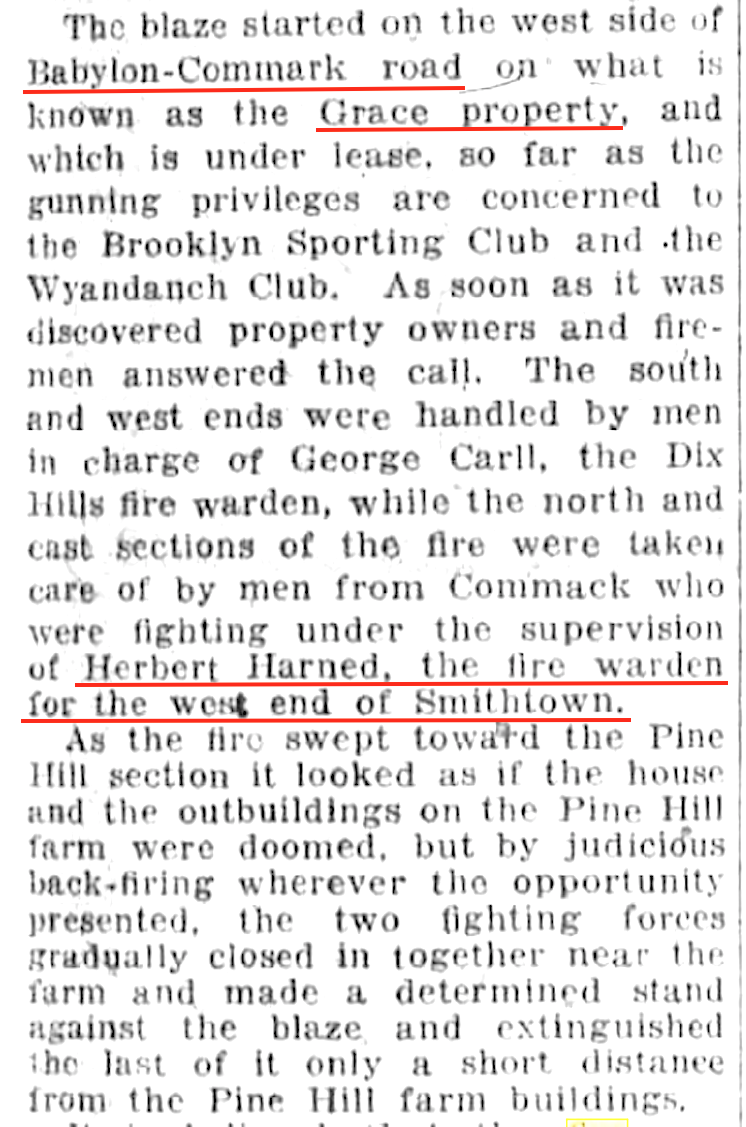
(Brooklyn Daily Eagle May 1, 1922)
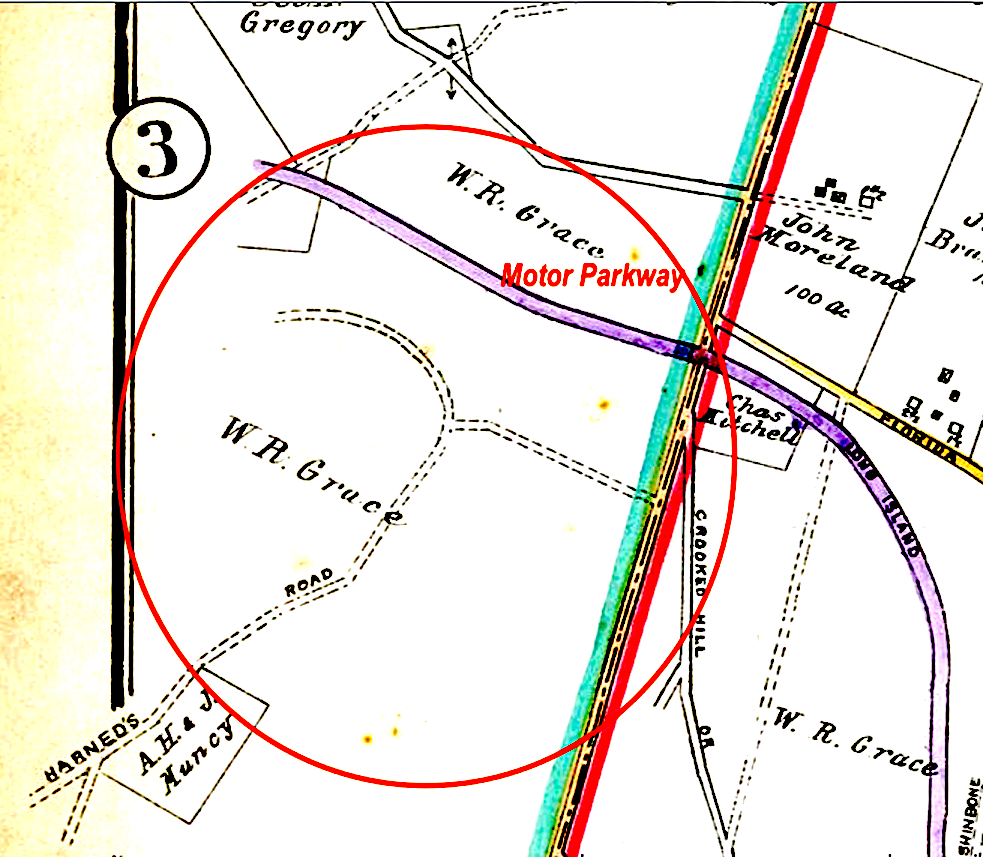
The area of the fire.
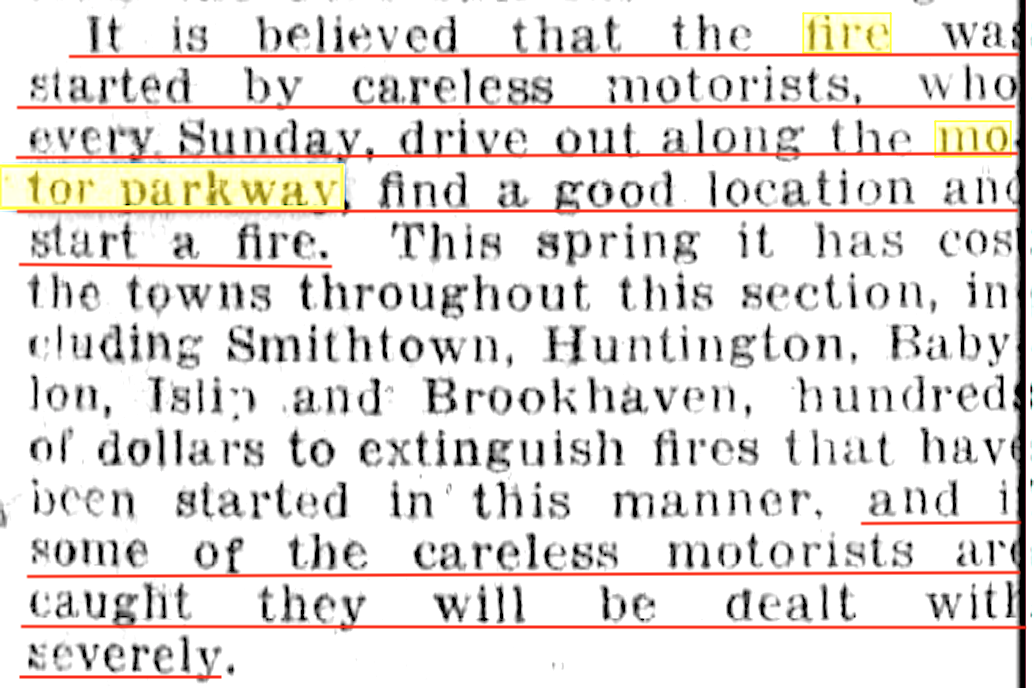
Mention of the Motor Parkway.
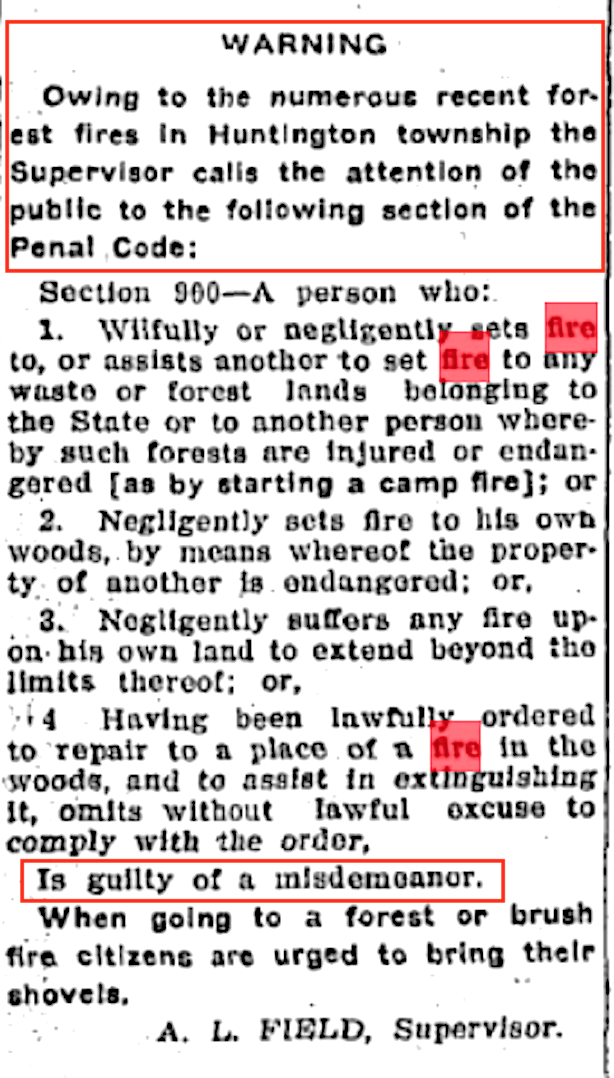
The situation got so bad that the Town of Huntington enacted fire prevention rules that if not followed would result in a misdemeanor being given the offender.
1924: Half Hollow Hills
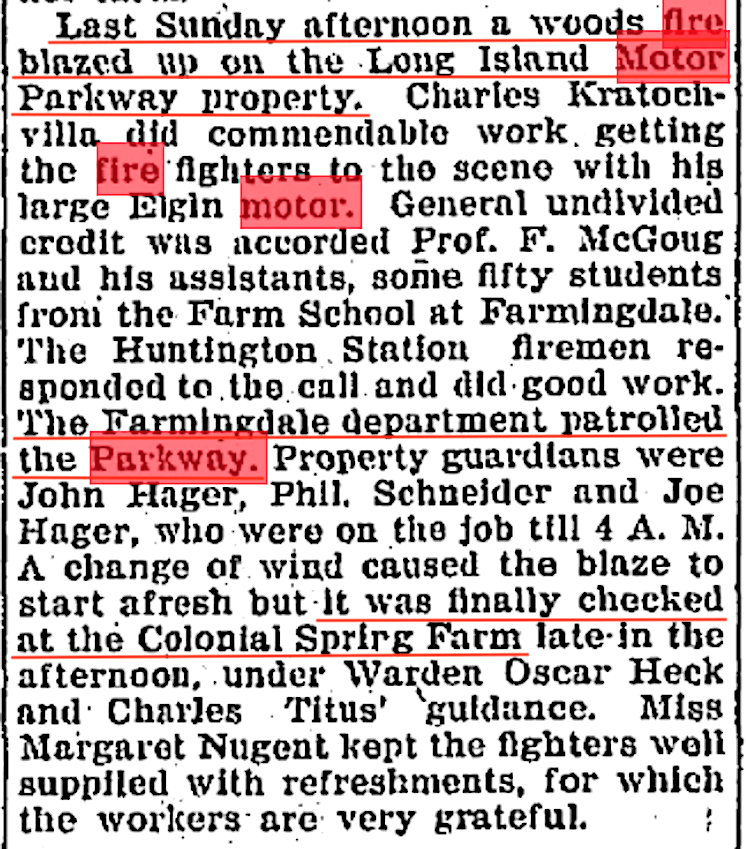
Additional fires continued to be reported in the Half Hollows, Farmingdale and Colonial Springs sections of the Parkway. (The Long-Islander Nov. 21, 1924)
1930: Half Hollow Hills (all from The Long-Islander May 9, 1930)
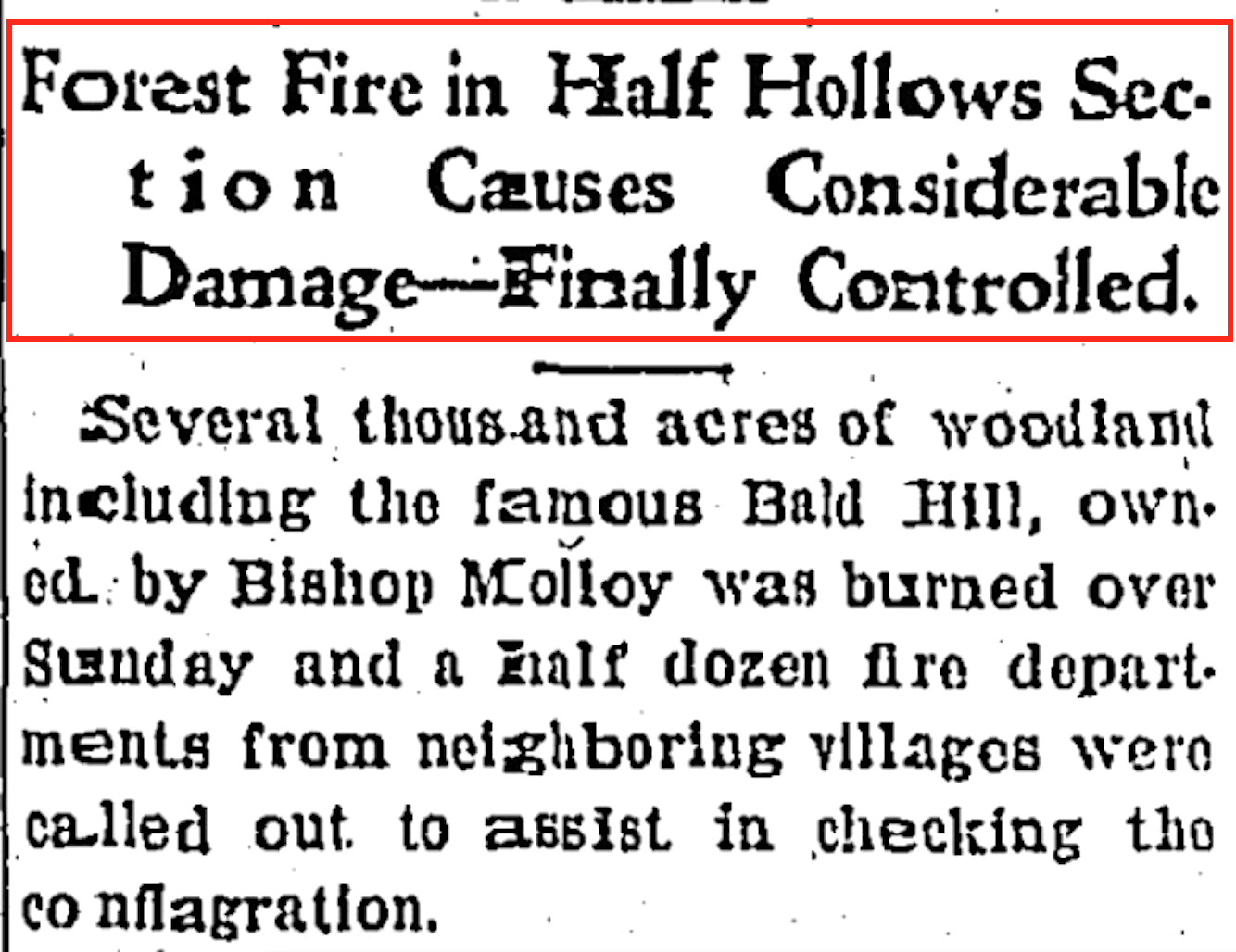
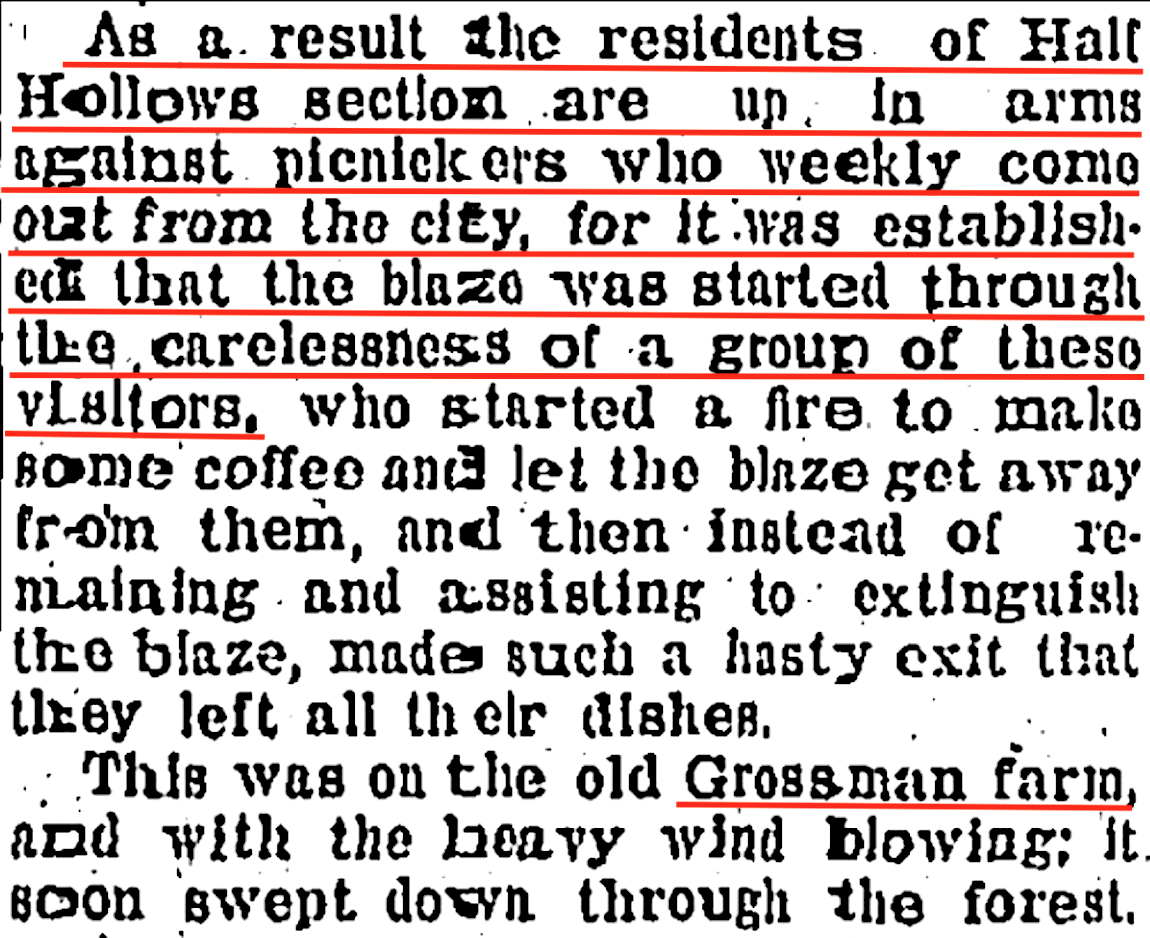
Again careless motorists!
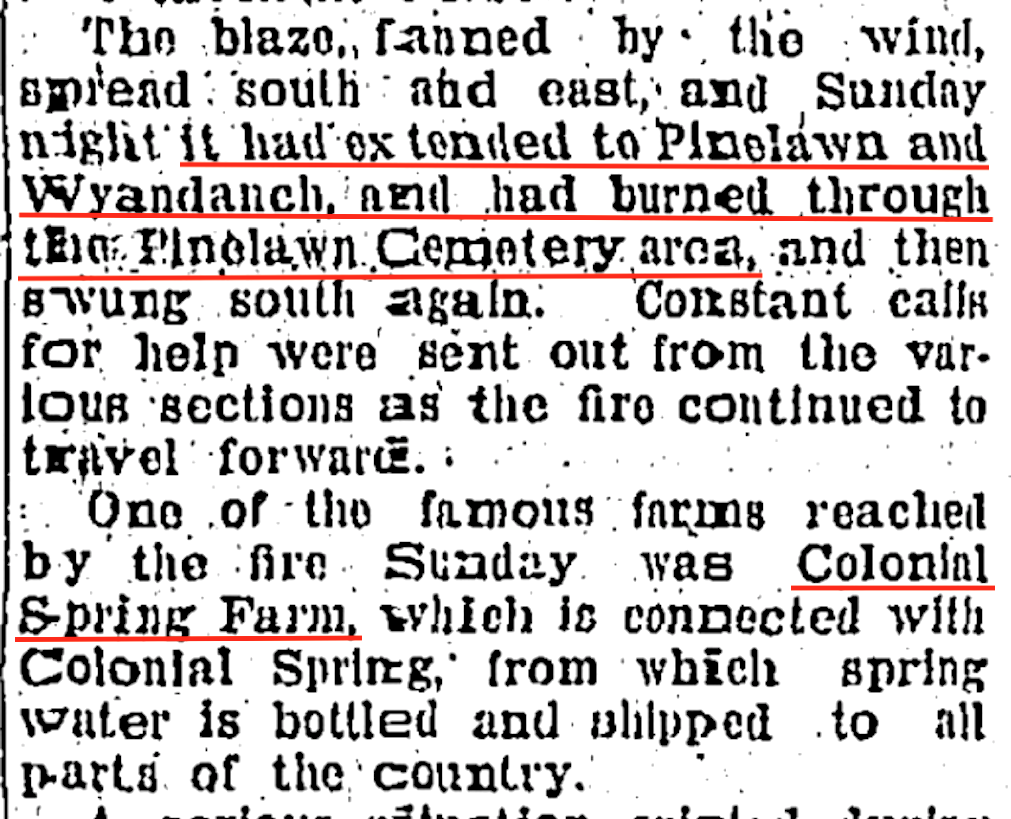
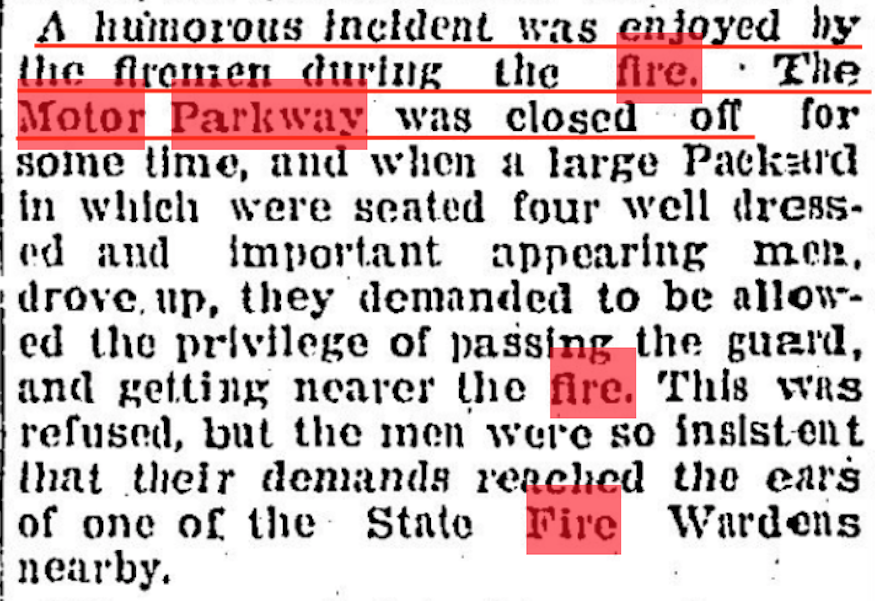
Those objecting to the closing of the Motor Parkway, when confronted by the fire warden resulted in not what they envisioned . . .
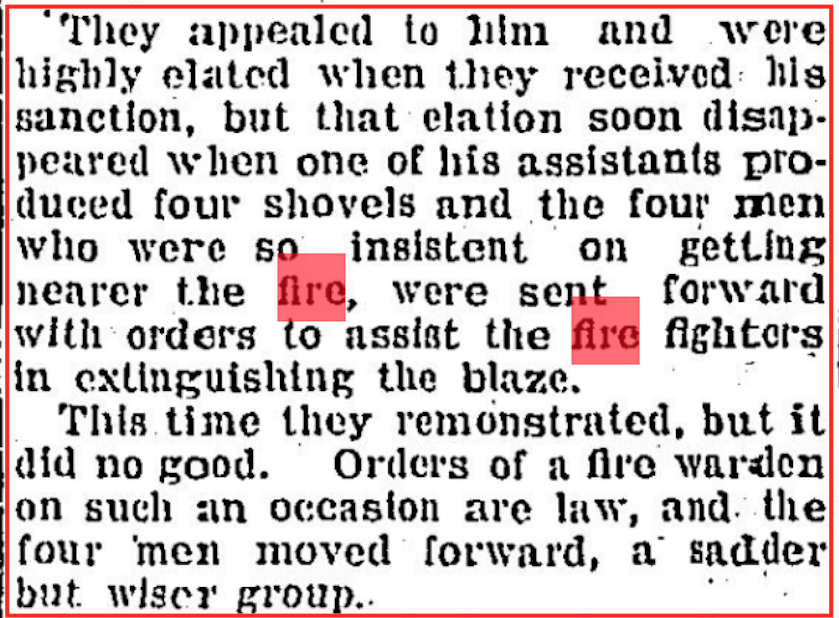
. . . as they soon found out.
1941: Brentwood
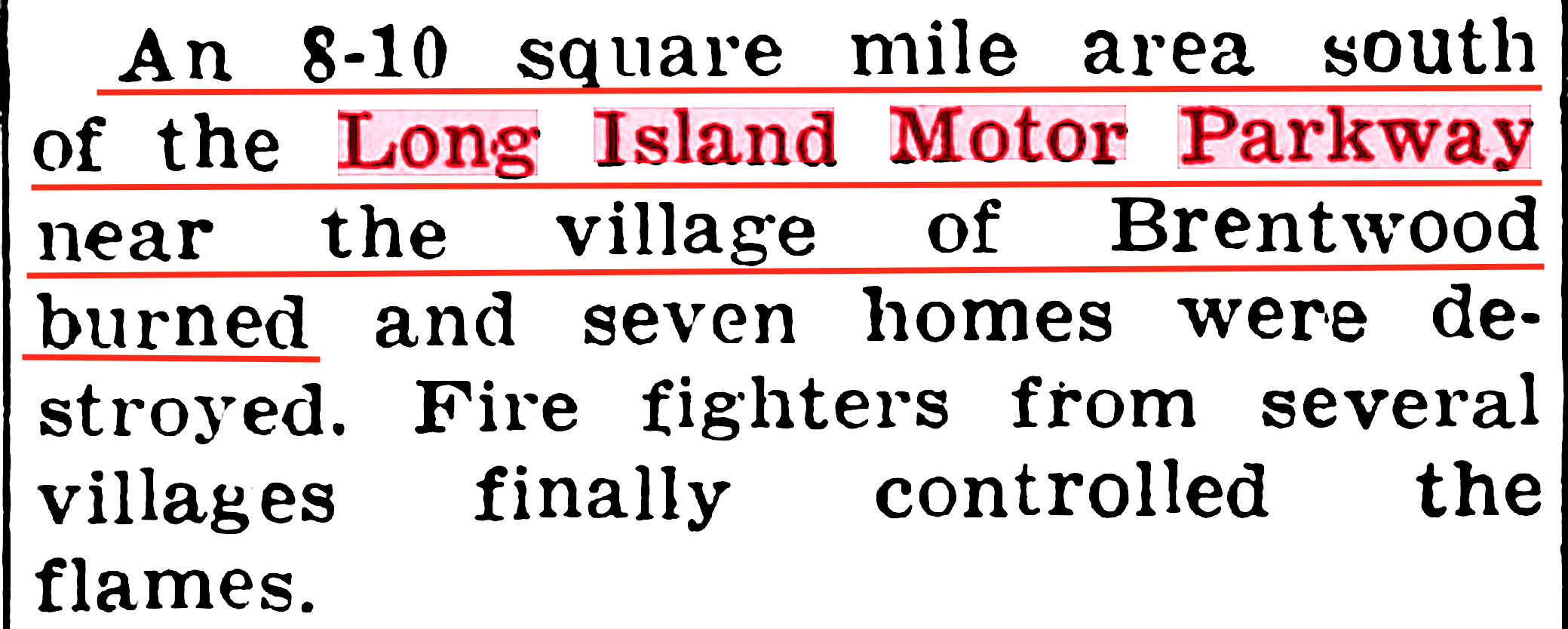
Found in a local newspaper in my new home state. (Wilmington Morning Star Apr. 22, 1941)
1952: Dix Hills
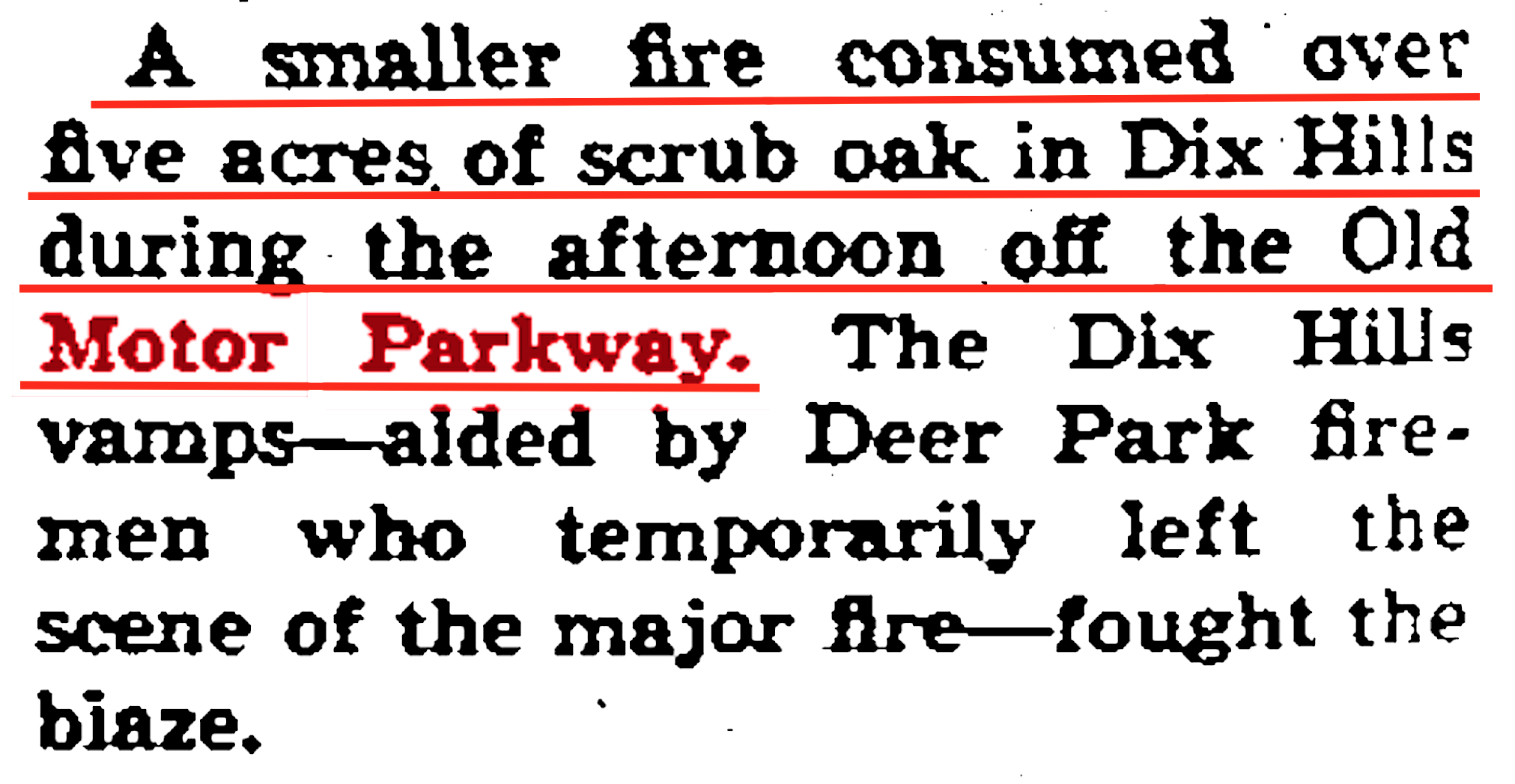
Two fires occurred at the same time near one another in November of 1952. The smaller one near the Motor Parkway was fought by the Dix Hills and Deep Park fire departments. Newsday Nov. 7, 1952)
Question to the readership - how do you believe the fires were reported to the local authorities and what was used to extinguish them as I don't believe Willie K. would have had fire hydrants along the Parkway.

Comments
I listened to an interview of a former Brentwood Firefighter a while back, think the interview was done by Brentwood Public Library. The Bucket Brigade System was used quite a bit in the early days of fire fighting, but a water source was needed obviously. Wells, Cisterns, Farm nearby. He recalls using a cesspool or drywell too. Shoveling dirt to smother flames. Fire Fighting is exhausting, back then even harder. Maybe Aircraft was utilized
There were Fire Watch Towers back then, to at least get an idea where and how large the Fire was. Guess some buildings had phone service. If there wasn’t a siren, possible that church bells would be a good alarm system.
Below is a screenshot from Wikipedia. The Roman Marcus Crassus created his own Fire Brigade. More so for increasing his wealth.
Art, It was such a concern to the Parkway that the toll receipts contained a condition that fires were not permitted in the forested areas of the Parkway. Regarding reporting fires along the Parkway, I’m assuming that motorists told the toll collectors of fires in the vicinity . All the lodges had phones so it was an easy matter to report the fires to the proper authorities. If they didn’t have tank trucks, they used shovels to pound the fires out and if that didn’t work…. shovel dirt on to the fires…no ?
Great post Art! I could understand fires developing in the arid SW but never suspected them in the NE, likely all caused by negligence. Obtaining running water in early 20th century was paramount for the city in many ways
I found the web address for the interviewed fireman, actually one of several Google Podcasts. Andy Wittman - As a 18 yr old firefighter in 1952, he received severe burns. He persevered and didn’t mind sharing his memories of growing up in Brentwood. I grew up in Brentwood, too.
https:/sites.google.com/site/localhistorydepartment/Home/classroom-visits
The George Carll mentioned - any connection to Marion Carll Farm in Commack?
An early fire was supposedly started by the workers who were tasked with clearing out the land for the clubhouse/inn (e.g., the Petit Trianon) to be erected as the Motor Parkway’s eastern terminus in Lake Ronkonkoma. Unfortunately the burn got out of hand and spread to other property nearby (South Side Signal, Apr. 23, 1910). An additional article states that the fire was quickly brought under control as telephones were used to summon members of the community.
Interestingly, the second article shown below was published a day later by the Brooklyn Daily Eagle and discusses Arthur Pardington’s comments to members of the community noting that “a gang of men” were currently preparing the land for the new clubhouse. Would imagine the men were the same that started the fire.
1915 map is from E. Belcher Hyde.